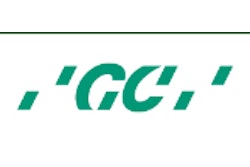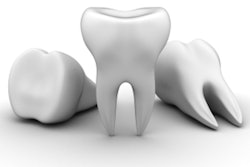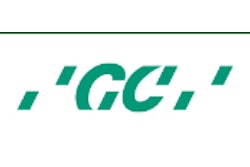
Partially erupted molars and their plaque-retaining qualities make them particularly tricky for youngsters to maintain. Indeed, the occlusal surface of molars is where 67% to 90% of caries manifest in 5- to 17-year-olds.
But a new study in the Journal of the American Dental Association comparing a glass ionomer sealant to a resin-based one in partially erupted molars found that the former may be a better choice (JADA, February 2012, Vol. 143:2, pp. 115-122).
While both types of sealants had similar retention rates at 24 months, glass ionomer group had a lower marginal staining and no caries, according to the study authors, from the State University of New York at Buffalo, Nova Southeastern University, Hacettepe University, and Temple University.
"One of the most effective ways to prevent caries in pits and fissures, as well as to arrest undiagnosed caries in these areas, is to place sealants," they wrote. "A clinical question remains concerning the choice of sealant type."
This prompted the researchers to compare the retention, marginal staining, and cariostatic properties of a glass ionomer sealant, GC Fuji Triage (GC America) and a resin-based sealant, Delton FS+ (Dentsply Professional).
Some aspects of glass ionomer sealants already tip the scales in their favor: It's moisture-friendly, has fluoride-release potential, and does not have steps resin-based sealants require, such as acid etching or the application of a primer or bonding agent. The researchers were looking for other factors that could determine superiority of one material over the other.
39 patients, 24 months
The researchers followed 39 patients between the ages of 5 and 9 years old with bilateral, partially erupted first molars lacking cracks, caries, hypoplasia, or restorations. A total of 78 sealants were placed.
Teeth that had operculum coverage of more than half of the occlusal surface were excluded, as were patients with developed syndromes or who were taking medications. Three patients with socioeconomic backgrounds indicating a high risk of caries were included.
The researchers measured the patients' saliva quantity, pH, and buffering capacity, and a split-mouth model was used to apply sealants, with a coin toss determining which sealant was assigned to which side of the mouth.
Patients with the resin-based sealants were assigned to one group, those with glass ionomer sealants were assigned to a second group, and untreated molars served as a control group. During the recall examinations, two previously uninvolved examiners evaluated the sealants at three, six, 12, and 24 months; noted where caries developed, and assigned ratings for two categories:
“The resin-based sealant was 22% more likely to have exhibited staining.”
Sealant retention
- Sealant completely retained.
- Sealant partially lost.
- Sealant completely lost.
Marginal staining
- No marginal staining.
- Partial marginal staining.
- Complete marginal staining.
One patient with two sealants did not return; one missed the three-month evaluation, and another missed all but the three- and 24-month recall appointments. Recall rates were 95%, 92%, 87%, and 69% for the three-, six-, 12-, and 24-month appointments, respectively.
"The overall probability of full retention decreased significantly across time for both sealant groups (p = 0.001)," while "the probability of complete loss of retention did not change across time for both sealant groups," the researchers noted.
Marginal staining results
However, the glass ionomer group performed better in the marginal staining category, displaying significantly less overall.
"In addition," the researchers wrote, "we found a significant difference between sealants in the probability of marginal staining's occurring, with the resin-based sealant 22% more likely to have exhibited staining."
At three, six, and 12 months, resin-based sealants displayed partial staining that was statistically significant (p = 0.001) compared with the other group.
While differences in sealant retention over time were insignificant statistically, the researchers did observe demineralization in both teeth in the resin-based sealant group in which the sealant was lost completely.
Caries developed in two patients with resin-based sealants; in both cases, the sealant was lost, possibly due to caries activity. No caries were reported in the glass ionomer sealant group, which researchers described as likely attributable "to the material's high fluoride release or to glass ionomer particles remaining in the bottom of fissures," they wrote.
Interestingly, their results for sealant retention were not in agreement with a number of clinical studies the researchers reviewed, which reported rates as high as 80% to 90% for resin-based sealants and as low as 10% to 20% for glass ionomer sealants.
"These contrary findings could be related to our use of a bond surface conditioner (Cavity Conditioner, GC America) with the glass ionomer sealant," the researchers noted. Inadequate moisture control could have skewed their resin-based sealant data, they added.
Nonetheless, they decided that glass ionomer sealants may be the better choice, regardless of the expectation of salivary contamination. While the resin-based sealant had similar retention rates, the glass ionomer sealant outperformed it when it came to caries and marginal staining, the study authors concluded.



















